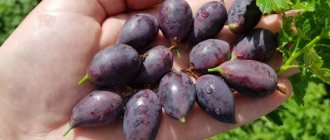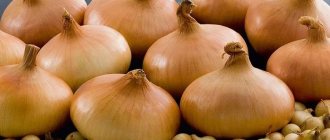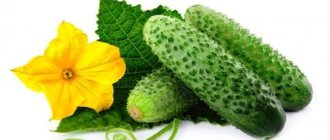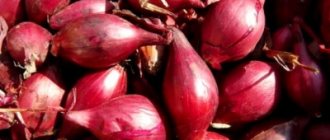Gooseberry variety Prune: reviews, photos, planting and care, cultivation, pruning, propagation
For planting on their garden plots, summer residents select certain varieties of fruit trees and shrubs, guided by certain requirements for these crops - their yield, taste, ripening time, the possibility of using the harvested crop for conservation or storage for long-term storage.
Gooseberries are one of the berry perennial shrubs that are loved by many gardeners for their sweet and sour taste, productivity and sufficient ease of care. Those summer residents who have not yet decided on the choice of variety of this berry bush or would like to plant some new variety in the garden should pay attention to the Prune gooseberry
.
Its main advantages, characteristics and cultivation features will be discussed below.
The content of the article:
1. History of the variety 2. Description and characteristics of the gooseberry variety Prune 3. Productivity of the variety 4. Positive and negative qualities 5. Diseases and pests 6. Planting and cultivation 7. Further care of the variety Prune 7.1 How to water gooseberries 7.2 Pruning gooseberries 7.3 Rules for applying fertilizing for shrubs 8. Propagation of gooseberries 9. Reviews of gooseberries Prune
Choosing a landing site
A description of the Prune gooseberry today can be found in all gardening reference books. All sources position it as a light-loving plant. It does not tolerate even partial shade, so it cannot be planted in the garden between trees. If you do not have the opportunity to plant bushes in an open and well-lit area, then plant them along the fence at a distance of one and a half meters from it.
Prune gooseberry does not tolerate excessive soil moisture; in such conditions it often gets sick. For this reason, try to avoid low-lying areas, especially if they are close to groundwater.
History of the variety
The gooseberry variety Prune was bred by a group of breeders led by K. Sergeeva from the All-Russian Research Institute of Horticulture named after I.V. Michurin
. Experts worked on its creation for several years at the end of the last century. They tried to obtain a new variety of gooseberry with unique characteristics: the original shape of ripe berries, increased productivity, and the absence of thorns on the shoots.
The following gooseberry varieties were taken as “parents”: Plum and Plum 259-23
. As a result, in 1992, breeders introduced a new berry bush - Prune Plum, which was distinguished by its ease of care, resilience to changing weather conditions, excellent taste, large fruit and high yield. And there are practically no thorns on the shoots. This gooseberry variety received most of these positive qualities from its “parents”.
After tests were carried out in the year of its creation, this gooseberry was included in the State Register of Russia.
Prune gooseberry is recommended for cultivation in the following regions:
- Central;
- Srednevolzhsky;
- Uralsk.
Gooseberry Prune: description and characteristics of the variety
This medium-sized, medium-spreading shrub is also distinguished by the average formation of lateral shoots
. The stems are thick, erect or slightly curved, without pubescence, gently emerald in color.
On the shoots in the lower part grow rare, rather large, dark-colored thorns, directed at an angle to the stems.
Gooseberry Prune - photo
The foliage is three- or five-lobed, small or medium in size, with small rounded teeth along its edges. The leaf blades are bright green, shiny, slightly wrinkled.
The flowers are small in size, surrounded by large light-colored sepals. They are collected in racemose inflorescences, each of which produces up to 3-5 ovaries. The first buds bloom on the shoots in the last ten days of May.
Photo gooseberry Prune
Ripe Prune gooseberry fruits - medium size, oval or pear-shaped, weighing 4.3-4.5 g
. Ripening gooseberries are burgundy in color, and at the stage of full ripening they are black; the top of the berries are covered with a characteristic waxy coating. The skin is quite dense, so the fruits are not prone to cracking even when ripe or during the rainy season.
The pulp is juicy, sweet and sour, with a slight plum flavor with a medium number of seeds, dark red in color.
Interesting!
Tasting assessment of Prune gooseberries is about 4.6-4.7 points. The sugar content in ripe berries is 10.4-10.5%.
The first ripe berries appear on the shoots of the Prune gooseberry already in the last days of June
. Fruiting is extended over time and continues until the second half of August. The fruits should be collected as they ripen, however, even overripe berries can hang on the bush without falling off, until the cold weather.
The harvested crop is of universal use
, the berries are eaten fresh, prepared into compotes, and used to prepare preparations for the winter. In addition to delicious preserves and jams, homemade liqueur or wine is prepared from ripe gooseberries.
Gooseberry Prune - video
Thanks to the dense and fairly thick skin, the harvested gooseberry crop easily tolerates transportation over different distances, and also has good shelf life - it can be stored in the refrigerator for 12-14 days without losing its excellent presentation and good taste.
Prune gooseberry is highly resistant to winter cold; it can withstand cold snaps down to -26-29 degrees Celsius without shelter; it is a frost-resistant variety
. This berry bush is also resistant to powdery mildew.
Characteristics
The gooseberry variety Prune Plum is characterized by the following features:
- The variety is mid-season and universal, the use of which is varied.
- One bush brings a harvest of up to 3-4 kg of berries, which depends on its age and size.
- It stores well and can be transported over long distances.
- Frost-resistant: able to withstand temperatures down to -34°C.
- According to the tasting assessment, out of 5 possible points, gooseberries score 4.2.
- It has a taste vaguely similar to prunes (hence the name).
- Brings a stable harvest only in favorable climatic conditions.
- If not properly cared for, it gets sick, but is resistant to powdery mildew.
Comment! Due to the dense skin of gooseberries, the Prune Plum variety is suitable for canning and transportation, so the variety is used for industrial cultivation.
Productivity
The yield of Prune gooseberry is not stable and depends not only on climatic conditions, but also on proper and thoughtful care, and timely implementation of all necessary agrotechnical measures. It varies significantly in different years and ranges from 5.4 to 14 t/ha.
Drought resistance and winter hardiness
The gooseberry variety is winter-hardy and suitable for growing in central Russia. In snowy winters it does not require shelter and can withstand t = -34C. Prune plum is not a drought-resistant variety: during prolonged drought, the roots stop growing and the yield decreases. The earthen ball must be kept moist at all times, this is especially important during the ripening period of the berries.
Resistance to pests and diseases
Prune is rarely more susceptible to powdery mildew, but is not resistant to anthracnose. It is affected by pests, so constant preventive inspection of the plant is important.
Maturation period
Gooseberries have a medium ripening period, which is convenient for northern latitudes. Berry picking begins in mid-July if the summer is warm. In cool conditions, fruiting is delayed by 1-2 weeks.
Transportability
Due to the thick skin and dense pulp, the fruits of the Prune Plum variety are transported over considerable distances, keeping them unchanged.
Positive and negative qualities of the variety
The main positive qualities of Prune gooseberry are
:
- compactness of the berry perennial;
- abundant harvests;
- excellent taste and commercial qualities of ripe berries;
- unpretentiousness to cultivation and care;
- resistance to winter cold;
- good adaptation to changing weather conditions;
- self-pollination of Prune gooseberry;
- there are practically no thorns on the shoots - the Prune Plum variety can be called thornless.
There are practically no disadvantages noted in the Prune Plum variety; it is only necessary to note that ripe berries can vary greatly in size and weight.
Diseases and pests of gooseberries
This gooseberry variety has increased resistance to most diseases.
Description of gooseberry pests and methods of control
But in rainy, cool weather, the Prune gooseberry berry bush can be affected by the following diseases:
Powdery mildew
. The first symptoms of this disease are the appearance of a white coating on the foliage and other above-ground parts of the bushes. You can fight powdery mildew by treating plants with a 1% solution of Bordeaux mixture or fungicidal preparations (Fitosporin, Trichodermin or Gaupsin).
Anthracnose
. The first signs of the disease are the appearance of brown spots on the foliage and shoots of the gooseberry. For preventive purposes, it is recommended to treat shoots with Bordeaux mixture in early spring and autumn. When the first symptoms of anthracnose appear, the bush should be treated 4 times with a 4% solution of copper sulfate.
Rust,
which can affect the entire plant.
The main symptom is the appearance of orange or yellow spots. The disease should be combated by treating the bushes with a solution of the following drugs: Bayleton, Abiga-Pik , Topaz, Khoma or Bordeaux mixture.
Reviews
- Victor: “Gooseberries of this variety have been growing on my plot for a long time. It does not bring any particular trouble and is characterized by stable productivity. The berries are very interesting, I make a good liqueur with them. They are also suitable for jam, but they are best used fresh and for compote.”
- Julia: “I recently tried these berries while visiting a friend, I really liked them and was immediately inspired to plant them at my place. She gave me five seedlings, I hope they will take root. There are no special secrets for growing, the main thing is to prune on time and water well. During all the time, she was not affected by diseases, only once attacked by aphids, but that year everyone really had a lot of them.”
Prune gooseberry: planting and growing
Before planting seedlings in a permanent place, you should select a suitable site. It should be well illuminated by the sun, the soil on the site should be well permeable to moisture, be slightly acidic and fairly fertile. And the groundwater level should not be closer to the soil surface than 1-1.5 m.
Varieties of berries!
Blackberry Agawam Blueberry Patriot Gooseberry Commander
You can plant Prune gooseberries in the autumn, about 1-1.5 months before the onset of cold weather, or in the spring, when the soil warms up to 14-16 degrees Celsius.
Important!
In autumn and spring, before planting, areas should be dug up, all plant debris should be removed, organic matter and complex mineral fertilizers should be added.
10-12 days before planting, planting holes (50*50 in size) are prepared. The distance between adjacent pits should be at least 0.6-0.7 m, and the row spacing should be about 0.7 m.
A layer of drainage 4-6 cm thick should be laid on their bottom. Large expanded clay and pieces of broken brick can be used as drainage material.
Then lay out a layer of nutrient substrate consisting of garden soil and fertilizers.
Seedlings are placed in the prepared holes, the roots of which are carefully spread over the entire diameter of the planting hole, and the remaining soil mixture is covered on top. The soil is carefully compacted and water is added - up to 10 liters for each plant.
How to plant gooseberry seedlings correctly:
Planting gooseberries in spring
Features of the plant
Gooseberry Commander
Plum gooseberry is a low-growing shrub of medium density, not spreading. It reaches a height of 1.5 meters. Powerful and thick shoots are located at an angle at the bottom, new branches rise vertically. The bulk of the thick thorns are located at the bottom of the shoot and do not interfere with care. Inflorescences are formed from 1-3 small flowers. Gooseberries are self-pollinating, but if there are other varieties of shrubs on the site, there will be more fruiting.
The plant has a mid-early ripening period. The large, oval-shaped fruits, some can grow up to 2 cm in diameter and weigh up to 10 g, look like plums. The thick skin with light veins is covered with a waxy coating. As they ripen, they gradually change color; the riper, the darker: young berries are red, and ripe ones are black. The taste is sweet and sour, with a sweet plum aftertaste. The fruits are considered very healthy due to their balanced chemical composition.
Characteristics for 100 g:
- sugar – 8.5-10.8%;
- acid – 2.2%;
- ascorbic acid – 44.1 mg.
In the second year after planting, the Prune seedling begins to bear fruit. One mature bush produces up to 4 kg of berries. The average ranges from 1.5 to 3 kg; there is no stable yield rate. Thanks to their thick skin, they can be transported without loss of quality.
Harvest
Prune gooseberries can be consumed fresh or processed. Unprocessed berries are most beneficial for humans. They normalize blood pressure, help strengthen the body, increase resistance to viruses, and improve the functioning of the gastrointestinal tract.
The berries are suitable for making jam, jam, compote. Winemakers prefer this variety to all others; it produces original sweet wines with a pleasant aftertaste.
Interesting! Non-alcoholic fruit drinks quench thirst and tone up, as they retain many useful substances.
Prune gooseberry has high winter hardiness: frozen branches are easily restored. The bush will withstand frost down to -34 0C, but an experienced gardener believes that cold weather affects the yield. High temperatures in summer also negatively affect the harvest.
Further care for the Prune gooseberry variety
Subsequent care for gooseberries of the Prune variety consists of regular watering, fertilizing, loosening the soil and removing weeds, as well as spring and autumn pruning of bushes
.
How to water gooseberries
You need to water the bushes quite abundantly and often, but at the same time make sure that the moisture does not stagnate in the soil. The top layer of soil must be kept moist at all times.
After each watering, the tree trunk circles should be loosened, simultaneously removing all weeds.
Pruning gooseberries Prune
To achieve more active flowering and fruit formation, many gardeners tie gooseberry shoots to trellises.
In spring and autumn, sanitary pruning of gooseberry bushes is carried out.
, removing all damaged, dried out and weak branches. You should also trim off some of the shoots growing inside the bush to prevent it from thickening.
How to prune gooseberries correctly
In autumn, it is also recommended to remove old shoots that no longer bear fruit.
.
Prune gooseberry: rules for applying fertilizers for shrubs
This gooseberry variety needs to be fed several times a season:
- in early spring, before the start of sap flow, any organic matter mixed with nitrophoska (or other fertilizer containing nitrogen) is added to the tree trunk circles;
- during the period of active formation of ovaries and the formation of berries, mineral fertilizers containing phosphorus and potassium are added to the soil;
- After harvesting and leaf fall, humus, rotted mullein or compost are added to the tree trunk circles.











